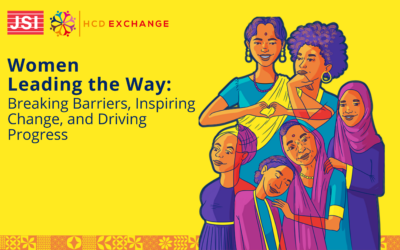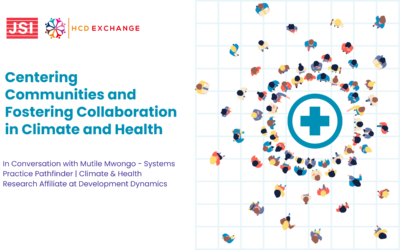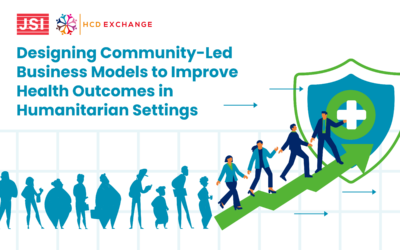 Oliver is the Service & Systems Design Practice Lead at ThinkPlace, based in the Nairobi office. He is passionate about the ThinkPlace mission: mastering business design in complex systems, to deliver tangible value. At ThinkPlace, Oliver works with clients in both the public and private sectors to imagine positive futures and bring them into existence using design thinking. What excites him most is how to design well with people: to get the process right, to get the right outcomes, anchored to the real world, people and all their complexities. Oliver has worked with clients in Africa, North America, Asia and Europe to design user-led strategies in sectors such as health, financial inclusion, education, energy, technology amongst others. Beyond work, Oliver is the co-founder of the ‘School Painting Drive’ Initiative which seeks to support and inspire children from underprivileged backgrounds by co-painting their classrooms and in the process, creating meaningful connections with the kids. He also spends his free time reading books and enjoys watching business and political documentaries.
Oliver is the Service & Systems Design Practice Lead at ThinkPlace, based in the Nairobi office. He is passionate about the ThinkPlace mission: mastering business design in complex systems, to deliver tangible value. At ThinkPlace, Oliver works with clients in both the public and private sectors to imagine positive futures and bring them into existence using design thinking. What excites him most is how to design well with people: to get the process right, to get the right outcomes, anchored to the real world, people and all their complexities. Oliver has worked with clients in Africa, North America, Asia and Europe to design user-led strategies in sectors such as health, financial inclusion, education, energy, technology amongst others. Beyond work, Oliver is the co-founder of the ‘School Painting Drive’ Initiative which seeks to support and inspire children from underprivileged backgrounds by co-painting their classrooms and in the process, creating meaningful connections with the kids. He also spends his free time reading books and enjoys watching business and political documentaries.
About the DREAMS Project
The DREAMS (Determined, Resilient, Empowered, AIDS-free, Mentored and Safe) project is a public-private partnership focused on adolescent girls and young women (AGYW) that aims to ensure that rates of HIV infections remain low. The project is being implemented in several African countries with a high HIV burden.
In Zimbabwe the DREAMS SMART girls’ program offers a range of educational (primary and secondary) interventions/packages for three different age groups: 10 to14, 15 to19, and 20 to 24, with the aim of increasing economic empowerment and thereby enabling greater agency and a more resilient future for the AGYWs.
How ThinkPlace leveraged HCD for this project
Leveraging the design thinking approach as well as the Social Economic Model (SEM), the adoption pathway model (page 66) and the Bloom’s Taxonomy Model, ThinkPlace worked with Population Solutions for Health (PSH) and FACT to identify key barriers and motivators of primary package completion among 20 to 24 years old. This was achieved by profiling the segment of girls taking part in the DREAMS curriculum, and further understanding and mapping their journeys, including internal determinants (attitudes, self-efficacy, expectations, past experiences, current knowledge, current behavior, motivational intent) as well as social determinants (social learning, social norms, and group identity) from recruitment to curriculum completion and advocacy. Applying a human-centered (HCD) approach, Oliver’s team co-designed solutions with the young women to address the barriers identified in their journey maps.
Key Learnings & Interventions
Based on the interactions with various stakeholders in Zimbabwe, the project generated rich findings and a range of key insights were extracted that provided design opportunities for addressing the challenge of high dropout rates from the SMART Girls’ program, for example:
- AGYWs dream of a financially independent future and thus place a premium on the financial literacy modules as it is not clear for them how the HIV and Gender Norms modules (which are lacking) could propel them towards such a future.
- Whilst AGYWs are expected to champion the SMART Girls program to gain the confidence and support of their families, peers, and communities, they are not able to clearly articulate the program to the people whose support is pivotal in ensuring they attend and complete the program.
- AGYWs prefer not only physical safe spaces whilst attending the program sessions, but also spaces that provide psychological safety given the sensitivity of some of the topics covered during the modules.
- Where the personal beliefs and convictions of facilitators contradicted some of the program topics, this clash in socio-cultural beliefs led to some of the topics in the modules not being covered, such as the use of protection during sex in the HIV module, as they feared encouraging immorality among the AGYWs.
- Adoption of the same content delivery mechanisms (devoid of participatory methodologies) meant that the different literacy levels of the AGYWs led to dropping out by some of the participants who felt left out.
Based on these learnings, ThinkPlace, together with the AGYWs and other stakeholders, co-designed interventions that leveraged principles from the fields of gamification, andragogy and behavior change theory to pivot attendees of the SMART Girls’ Program back into it through:.
- Use of a visual learning tool – the Modules Scale – that displayed the importance of various modules as part of the collective balance required towards gaining financial security.
- The SMART Girl Trivia Game, which aimed to ensure the circulation of knowledge from the program’s material, not only amongst the enrolled girls, but also those outside of it, as a way of promoting the program.
- Use of the positive deviant model, which utilized a key influencer from the program participants’ lives to provide continuous encouragement regarding their participation in the program.
Currently, these interventions are being implemented in 3 districts in Zimbabwe with the preliminary results suggesting increased participation and engagement among AGYWs across all modules within the SMART Girls’ program in Zimbabwe. Moreover, the interventions designed in Zimbabwe show potential for scalability and sustainability in other regions where DREAMS is being implemented and within other age groups beyond the 20-24 year old demographic.




